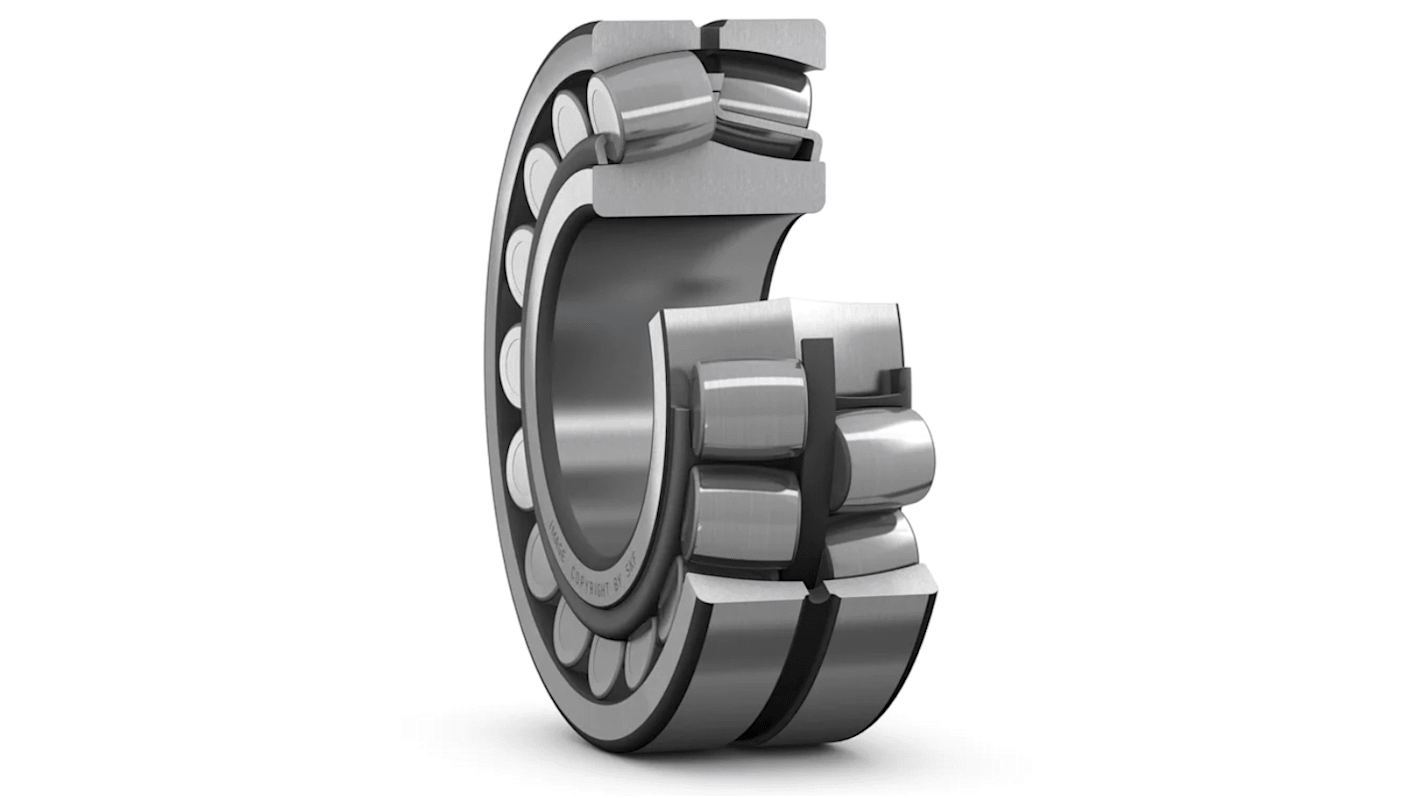SKF 22210EK Tapered 1:12 50 mm I.D Roller Bearing, 90 mm O.D
- RS Stock No.:
- 506-460
- Mfr. Part No.:
- 22210EK
- Brand:
- SKF

Bulk discount available
Subtotal (1 unit)*
£94.81
(exc. VAT)
£113.77
(inc. VAT)
FREE delivery for orders over £50.00
In Stock
- 1 unit(s) ready to ship from another location
Need more? Click ‘Check delivery dates’ to find extra stock and lead times.
Units | Per unit |
|---|---|
| 1 - 4 | £94.81 |
| 5 - 9 | £91.02 |
| 10 - 24 | £89.13 |
| 25 + | £87.23 |
*price indicative
- RS Stock No.:
- 506-460
- Mfr. Part No.:
- 22210EK
- Brand:
- SKF
Specifications
Technical Reference
Legislation and Compliance
Product Details
Find similar products by selecting one or more attributes.
Select all | Attribute | Value |
|---|---|---|
| Brand | SKF | |
| Product Type | Roller Bearing | |
| Inside Diameter | 50 mm | |
| Race Width | 23mm | |
| Bore Type | Tapered 1:12 | |
| Cage Material | Sheet Metal | |
| Dynamic Load Rating | 107kN | |
| Static Load Rating | 108kN | |
| Series | 22210 EK | |
| Outside Diameter | 90 mm | |
| Standards/Approvals | No | |
| Limiting Speed | 9500rpm | |
| Select all | ||
|---|---|---|
Brand SKF | ||
Product Type Roller Bearing | ||
Inside Diameter 50 mm | ||
Race Width 23mm | ||
Bore Type Tapered 1:12 | ||
Cage Material Sheet Metal | ||
Dynamic Load Rating 107kN | ||
Static Load Rating 108kN | ||
Series 22210 EK | ||
Outside Diameter 90 mm | ||
Standards/Approvals No | ||
Limiting Speed 9500rpm | ||
RoHS Status: Exempt
- COO (Country of Origin):
- GB
SKF Roller Bearing, Spherical Bearing Type, 50mm ID, 90mm OD, Tapered Bore - 22210EK
Going around in circles looking for a durable, low-maintenance bearing? Pick this roller type from SKF. Thanks to a high fatigue limit load of 11.8kN, it's ideal for heavy-duty tasks. It also withstands both radial and axial loads, so it's a versatile choice for industrial applications. The steel cage material is hardwearing and resists corrosion when exposed to harsh conditions. Integral seals keep the bearing protected from dust and contaminants, so you get reliably smooth performance.
Features & Benefits
• Dynamic load rating of 104kN and static load rating of 108kN mean it handles high-stress tasks
• Fast limiting speed of 9,500rpm so it withstands rapid rotations
• Sheet metal cage guides the rolling parts to keep vibration and noise low
• Inbuilt re-lubrication point makes greasing quick and easy
Applications
• Agricultural machinery
• Construction industry
• Automated assembly lines
What's the difference between reference speed and limiting speed?
The reference speed of a bearing is based on its thermal properties and is calculated taking load and lubricant into account. The limiting speed is based on mechanical capabilities and shouldn't be exceeded, as that would risk damage to the unit.
Related links
- SKF 22210 EK/C3 50mm I.D Spherical Roller Bearing, 90mm O.D
- SKF 22210 E 50mm I.D Spherical Roller Bearing, 90mm O.D
- SKF 22210 E/C3 50mm I.D Spherical Roller Bearing, 90mm O.D
- SKF BS2-2210-2RSK/VT143 50mm I.D Spherical Roller Bearing, 90mm O.D
- NTN 22210EAKW33ZZ 50mm I.D Spherical Roller Bearing Spherical Roller Bearing, 90mm O.D
- NTN 22210EAW33C4 50mm I.D Spherical Roller Bearing Spherical Roller Bearing, 90mm O.D
- NTN 10X22210EAW33EEL 50mm I.D Spherical Roller Bearing Spherical Roller Bearing, 90mm O.D
- NTN 22210EAW33ZZ 50mm I.D Spherical Roller Bearing Spherical Roller Bearing, 90mm O.D
